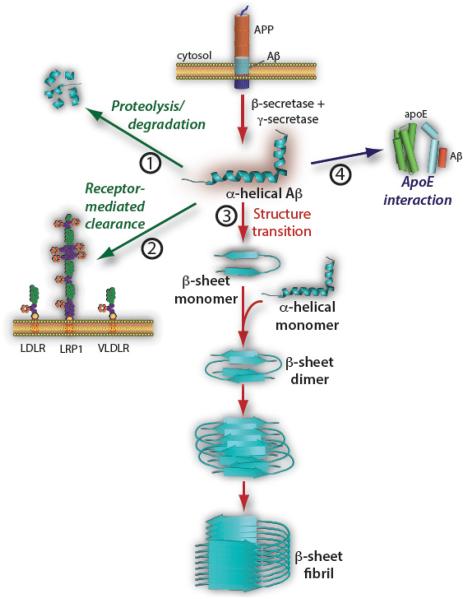Fig. (1). Pathways of Aβ metabolism.
Soluble amyloid beta (Aβ) peptide is generated from proteolytic processing of amyloid precursor protein (APP) by the successive action of β- and γ-secretases in brain cells (top center). The level of Aβ production is counterbalanced by its degradation via protease digestion (Path 1) and receptor mediated endocytosis (Path 2). Alternatively, soluble α-helical Aβ may undergo a pathological transition to β-sheet conformer that promotes self-association and oligomerization (Path 3). How interaction between apolipoprotein (apoE) and Aβ (Path 4) influences Aβ metabolic fate is the subject of this review.

